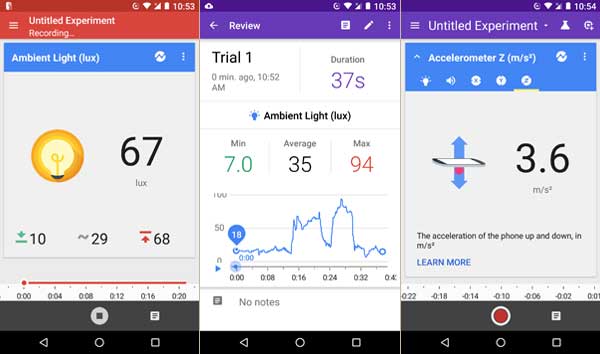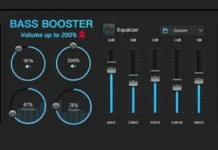Science Journal is a new app that turns your Android phone into a pocket science laboratory. With the app, you can measure sound, light, motion, etc. using your phone’s built-in sensors, such as accelerometers, ambient light sensor, microphone, etc. The app is mainly intended for students (10 and up age groups) and help them start their own science experiments using phone’s built-in sensors, as well as compatible external sensors.
Science Journal app (initiated by Google) makes it possible to use your phone’s sensors for science experiments. For example, you can use the accelerometers to investigate movement, use microphone to measure noise level and compare it with other noise, use ambient light sensor to measure and compare light intensity and more.

In addition, you can add notes, images and other details to your experiment. When you add data, the app will generate graphs of it in real time, which you can use to compare the data to the results from other experiment you have completed.
In other words, the Science Journal app allows you to gather data from the world around you. It uses sensors to measure your environment, like light and sound, so you can graph your data, record your experiments, and organize your questions and ideas.
To help students get started with their own science experiments, the app developer has opened an activity page where they can find some getting started activities to try out. The Science Journal app is available now from the Google Play Store.



